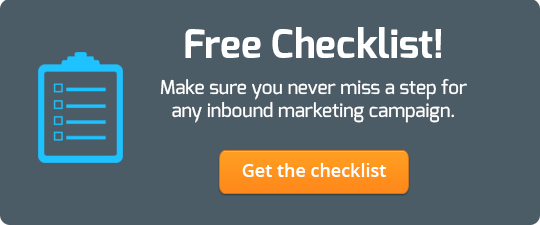Hedge Your Inbound Marketing Bets
![]() If I’ve learned anything in my 36 years, I’ve learned to not put all of my proverbial eggs in one proverbial basket. If the basket bottom falls out, well, you’re screwed. I don’t invest in just 1 stock. I don’t let it ride on a spin of the roulette wheel. In marketing, I also don’t feel it’s wise to invest in 1 singular strategy.
If I’ve learned anything in my 36 years, I’ve learned to not put all of my proverbial eggs in one proverbial basket. If the basket bottom falls out, well, you’re screwed. I don’t invest in just 1 stock. I don’t let it ride on a spin of the roulette wheel. In marketing, I also don’t feel it’s wise to invest in 1 singular strategy.
As an Inbound Agency, we get inquiries about our PPC (pay per click) or SEO (search engine optimization) services, thinking these will cure all that ail a floundering web business. In a few cases, sure, they could. 99% of the time, we find there are a number of issues holding a website back from reaching it’s full potential. These issues could include traffic volume and / or quality, low on site conversions, or poor visitor / customer re-engagement. A big part of our daily activities revolve around properly diagnosing issues like these, and providing solutions to help our clients get over the hump.
Whether you’re looking to engage an agency for help or you’re looking to champion these efforts internally, I suggest first identifying the core issues with your website or web strategy, and choose 2-3 strategies to get the ball rolling.
When attempting to identify the real issues with your website, I recommend utilizing a free tool called Google Analytics. Google Analytics will provide you with data surrounding your traffic volume and sources, your leading visitor engagement statistics, and (if setup correctly) your conversion paths and rates. Without a sound understanding of how your website is currently performing, it will be nearly impossible to choose strategies to improve the situation.
In our industry, the lowest hanging fruit to attract qualified visitors is Paid Search. It’s fast (you can be up and running in hours), it’s very focused (on keyword, geographic, and budgeting levels), and it’s manageable (can be optimized to success). While paid search typically refers to Google, Yahoo and Bing, PPC marketing can also apply to paid ads on various social media platforms, such as Facebook.
The next lowest hanging fruit isn’t actually that low, but it’s an absolute must in any web strategy – SEO. This platform isn’t nearly as fast moving as PPC, but you can’t ignore the fact that 85% - 90% of all people who search on Google, Yahoo and Bing will click on organic ads. Anyone who doesn’t take proactive efforts to improve organic results isn’t serious about their web strategy.
Although there are a number of ‘Black Hat’ (illegal) tricks to boost SEO instantly, don’t be fooled into employing these on your site. While you might see some quick, short-term wins, if Google sniffs out what you’re up to your site could be black listed for a long, long time. Instead, we recommend integrating a content publishing strategy (think blogging) to create a lot of new content around a specific topic. In doing so, you’ll build your own content library, will look more authoritative to your website visitors, and you’ll be more attractive to the search engines when someone searches for what you’re writing about.
The third strategy we suggest employing is to look on site and implement a few strategies to boost your onsite conversion rates. This could be as simple as adding a phone number, or calling more attention to your ‘Contact Us’ page. It could also be as complex as adding eBooks to your site that speak to your target buyers at each phase in the buying cycle, and exchanging those eBooks for contact names and emails. Regardless of what you feel is the best solution for your business, you must try something proactively to optimize your site to convert more often.
Once 1, 2 or all 3 of the strategies above are in motion, have mechanisms in place to track data, make sure you consistently analyze results, identify the strategies providing the best return, put more emphasis on those strategies – rinse and repeat, rinse and repeat.
Inbound Marketing isn’t about picking one strategy, be it more traffic or on-site conversion optimization. It’s about hedging your bets, implementing thoughtful strategies to attract the right visitors and providing the right content to convert your traffic as often as possible.

November 5, 2014
